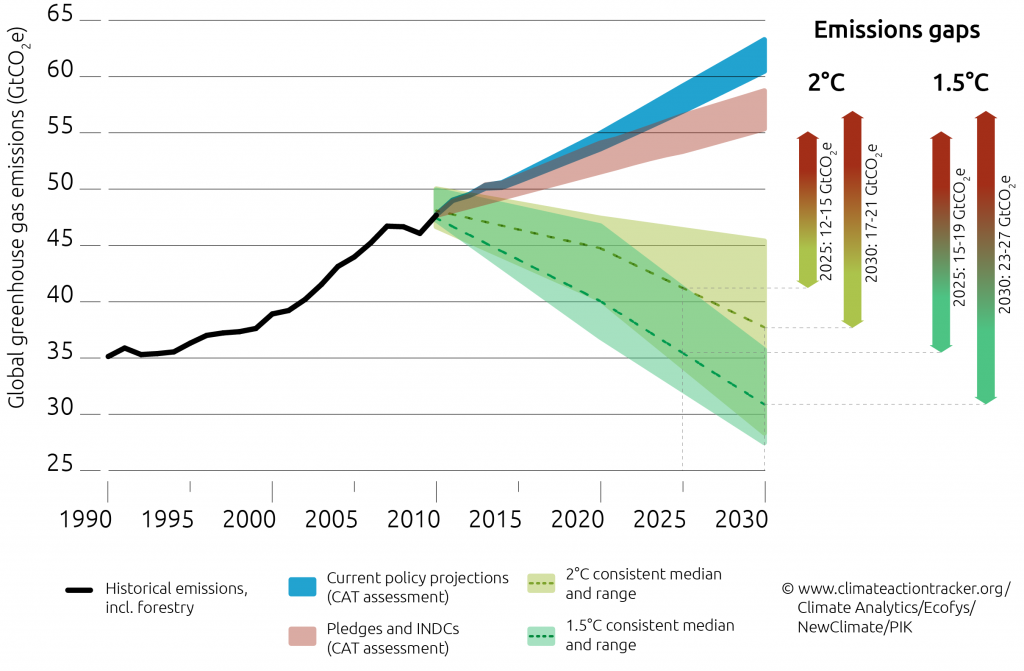Climate Change Conference: Goals far from reach
In the end of November delegates of the UN will meet in Paris to approve a consecution to the Kyoto-Protocol. But national targets are already disclosing that many don’t understand the gravity of the situation.
The USA is going one better. The Clean Power Plan, which was presented by US-President Obama on August 3rd, intensifies the climate targets of the second biggest green house gas emitter worldwide. Instead of 30 percent, the emission of green house gases will be reduced about 32 percent until 2030*. The share of renewables will rise up to 20 percent instead of only 16. Nevertheless the international monitoring organization for climate change, the Climate Action Tracker (CAT), tags its efforts a “medium” only. Even if the changes would be noteworthy, to reach the intended goal of a warming of the atmosphere by only two degree Celsius until the year 2030, it is just not enough.The two-degree-target, set by the United Nations, is receding into distance. After the tepid climate summit in Lima, 2014, the members settled to set up national climate goals, INDCs (Intended Nationally Determined Contributions), to make clear which steps a state is going to take to limit the warming of the atmosphere. These statements of intent should be handed in beforehand the UN Climate Change Conference in Paris (November 30th – December 11th), to prevent that some states might avoid tangible concessions to sit things out somehow. Out of 195 states 56 already handed in an INDC. Four of them, Morocco, Ethiopia, Costa Rica and Bhutan are in the green zone. If they are implementing their INDCs, they will meet the requirements set out by the UN. For the rest it is just not enough.
Development of the green house gas emissions worldwide

The goal of the Climate Conference is to limit global warming to two degrees. It will most probably fail to meet it. What is more it would need to exceed this target says Marcia Rocha of CAT. Especially for the least developed countries a warmer atmosphere could have severe consequences. To protect them, the climate shouldn’t exceed 1.5 degrees, she says. Otherwise many parts of the world could become uninhabitable. That is why Rocha calls for the next conference to be already in 2020. To put pressure on states which are trying to avoid tangible concessions.
*As measured by the level of 2005
** The term green house gas (GHG) covers various chemical compositions like carbon dioxide (CO2), Methane (CH4) or Nitric Oxide (N2O). These compositions have in common that they can absorb and re-emit heat, which can lead to a warming of the atmosphere – but they do so to a different degree. If GHGs are compared, the value is measured in carbon dioxide equivalent (CO2e). For example: One kg Methane can heat the atmosphere 25 times more than one kg carbon dioxide. So its value corresponds 25 CO2e
Foto Title: (c) Common Dreams: CC BY-SA 3.0 US – changes made

 share
share tweet
tweet share
share


Leave a Reply